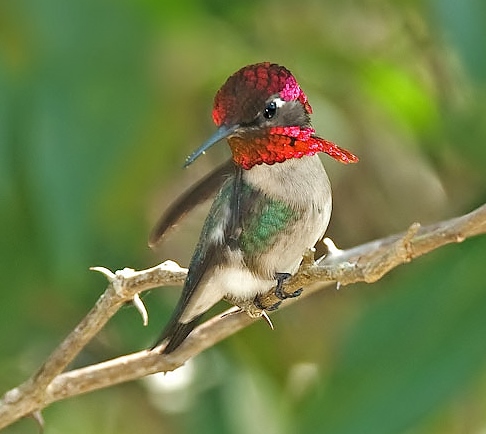 |
| Photo by Richard Stern (Mango Verde) |
Common name:
bee hummingbird (en); beija-flor-abelha (pt); colibri d’Elena (fr); zunzuncito (es); bienelelfe (de)
Taxonomy:
Order Apodiformes
Family Trochilidae
Range:
This species is endemic to Cuba, being found throughout the island and well as in the offshore island of La Juventud.
Size:
The bee hummingbird is the smallest bird in the world, being just 5-6 cm long and weighing 1,6-2,6 g.
Habitat:
These birds are mostly found in dense tropical forests and along forest edges with abundant scrub coverage, also using swamp forests, moist scrublands, second growths and rural gardens. They are present from sea level up to an altitude of 1.200 m.
Diet:
They feed mainly on nectar, but will also hunt small insects and spiders.
Breeding:
Bee hummingbirds are polygynous, with males forming leks where they perform songs to attract females. They can mate with several females, having no further part in the breeding process afterwards. Breeding takes place in March-June, when most trees and scrubs are flowering maximizing food availability. The female builds a small cup-shaped nest, made of moss, bark and spider web, and lined with down. There she lays 2 white eggs which she incubates for 14-23 days. She raises the chicks alone and they fledge 18-38 days after hatching.
Conservation:
IUCN status – NT (Near-Threatened)
This species has a large breeding range, but they are now described as uncommon and the population is suspected to be declining at a slow to moderate rate, as a result of forest degradation and destruction. They were common in the past, but in the 19th century they were heavily hunted because stuffed hummingbirds were a symbol of status for women. Presently the main threats are habitat destruction and degradation. Only 15-20% of the native forest of Cuba still remain, and these are threatened by the expansion of cacao, coffee and tobacco production, as well as other types of agriculture and pastures for cattle.







